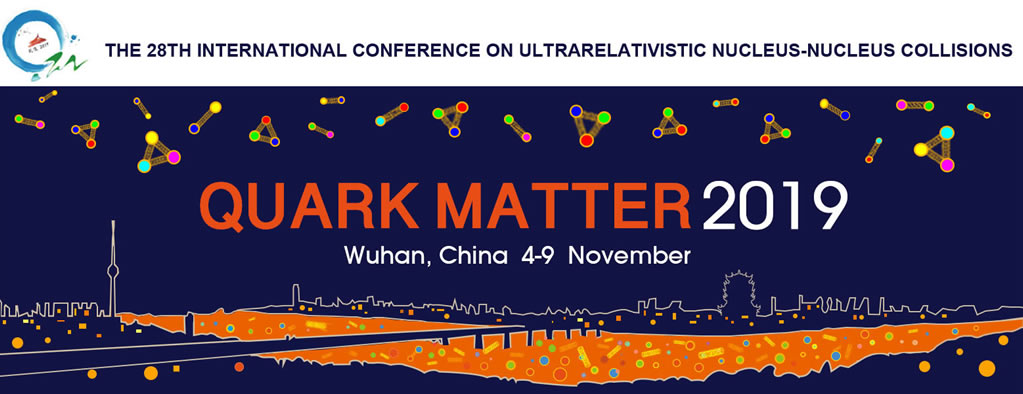Conveners
Parallel Session - Heavy flavor III
- Xin Dong (Lawrence Berkeley National Lab)
The production cross-sections are reported for the $\Upsilon(1S)$, $\Upsilon(2S)$, and $\Upsilon(3S)$ mesons in pp and PbPb collisions at 5.02 TeV, as functions of transverse momentum and rapidity. The dependence of the yield on the event activity and collision centrality is also presented for PbPb collisions. A comparison with the 2.76 TeV data in order to assess the energy dependence of the...
Heavy quarks are unique tools to investigate the properties of the Quark-Gluon Plasma (QGP) formed in ultra-relativistic heavy-ion collisions. Due to the large masses, heavy quarks
are produced in hard scattering processes on timescales shorter than the QGP formation time, thus they experience the entire evolution of the medium interacting with its constituents.
The hot QCD matter is...
High energy jets, evolving from a single parton, produced with transverse momentum up to a TeV, have a variety of scale dependent interactions with the QGP. The mass of heavy-quarks introduce another scale within this evolution. Modeling both the heavy quark shower and the fluid dynamical medium event by event, we demonstrate that in the high virtuality portion of a jet, where the dead-cone...
The production of heavy quarkonium in heavy ion collisions has been used as an important probe of the quark-gluon plasma. The initial insight was that due to the plasma screening effect, the color attraction between the heavy quark-antiquark pair is significantly suppressed at high temperature and thus no bound states can exist, i.e., they “melt”. In addition to the screening of the color...
Measurements of nuclear modification factors (RAA) and elliptic flow (v2) for open heavy flavor hadrons are essential probes of the Quark Gluon Plasma produced in heavy-ion collisions. Single electrons from semi-leptonic decays are an excellent channel to study open heavy flavor due to their large branching fractions and triggering possibilities. Additionally, semi-leptonic c-hadron decays can...
The heavy-flavor transport coefficients contain important information on the strong interaction at finite temperatures. Extraction of these numbers from experimental data requires dynamical modeling of heavy-flavor transport that is coupled to a realistic medium evolution. Furthermore, meaningful extractions necessitate both a faithful implementation of the physical inputs to be tested and the...
It is largely acknowledged that heavy flavor probes are sensitive to the properties of the quark gluon plasma and as such they are often considered an important tool for the plasma tomography studies. In the past several years there has been an astounding amount of work aimed at understanding the heavy quarks coupling with the medium. Nevertheless, the longitudinal dependence of common...
